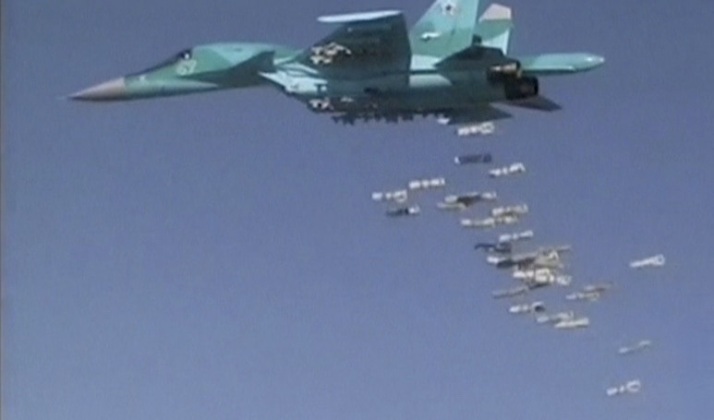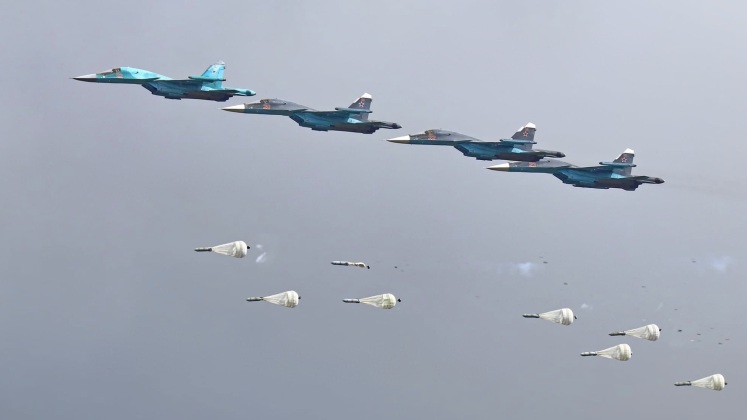News
Russia Launches Largest Ever Bombing Campaign on Ukrainian Targets: Su-34 Fleet’s Delivery Capacity Grows
The Russian Aerospace Forces have launched their largest bombing campaign on record against Ukraine, according to a report by the General Staff of the Armed Forces of Ukraine. The attacks were launched on October 17, and included 109 airstrikes across Ukrainian territory. The bombing was reportedly conducted in parallel to the launch of 6,024 loitering munitions, and escalated shelling including 4,941 separate attacks against Ukrainian military positions and infrastructure. The Su-34 strike fighter was responsible or the bulk of bombing operations, and has served as the workhorse of the Russian Aerospace Forces since the outbreak of full scale hostilities in February 2022. The aircraft is a heavily enhanced derivative of the Su-27 heavyweight air superiority fighter, and is approximately 50 percent heavier, with the longest range and highest weapons carrying capacity of any fighter type in the world.

The Su-34’s reduced radar cross section comparable to that of a cruise missile, combined with its advanced electronic warfare capabilities, and its high levels of manoeuvrabilitymore comparable to that of a fighter than a bomber, has made it highly survivable despite the high intensity at which it has conducted operations on the frontlines. The aircraft’s scale of production has more than doubled since early 2022 to an estimated 30 per year, with Su-34s already having been procured in much greater numbers than any other post-Soviet fighter type. Ukrainian Army frontline personnel speaking to various Western media outlets have widely lamented “the additional devastating power” of glide bomb strikes, which Su-34s are primarily responsible for launching. They stressed that these such attacks using bombs with up to 500 kilograms of explosives were obliterating their underground bunkers, with one serviceman comparing their impact to “hell’s gates,” stressing that the Russian Aerospace Forces “would send them two by two by two, eight in an hour… It sounds like a jet coming down on you.”

The depletion and exhaustion of Ukrainian air defences has allowed Su-34s to play a growing role in providing air support across the frontlines. Commenting on glide bomb strikes on May 2023, Ukrainian Air Force spokesman Colonel Yuri Ignat warned: “Those bombs can fly about 70 kilometres (about 43 miles) and they may target the facilities of critical infrastructure, kindergartens, residential areas and educational and medical institutions and we cannot counter this type of ammunition. Our air defence is inefficient against the bombs themselves but we should rather try to down the Su-34 [strike fighter] carriers of this ammunition.” The spokesman otherwise observed regarding the new guided variants of the FAB-500 bomb specifically: “They made something like the Western JDAM [Joint Direct Attack Munition] out of the FAB-500 bomb. They attached wings to it and a control unit. The guided aerial bomb flies approximately 70 kilometres to the target.” Expansion of the Su-34 fleet, and the reported raising of availability rates, has been supplemented by a tremendous expansion in the production of ballistic missiles, cruise missiles and single use drones, which has significantly increased pressure on Ukrainian defences.












